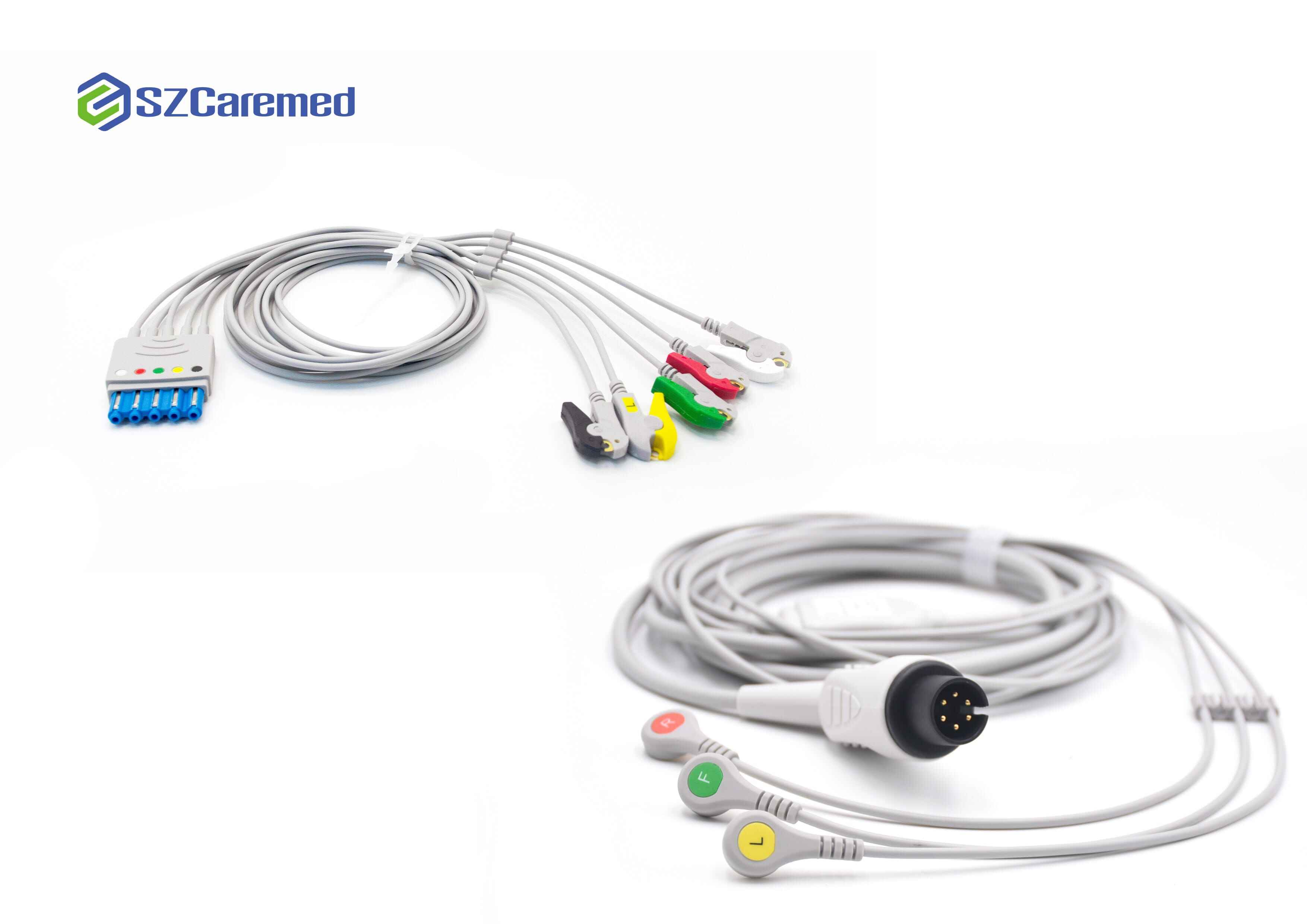The Critical Role of EEG Cables in Accurate Medical Diagnostics
How EEG Electrodes Differ from Other Sensors Like Oxygen Sensors
EEG electrodes and oxygen sensors are distinct tools serving different purposes: while EEG electrodes are designed to measure electrical activity in the brain, oxygen sensors monitor blood oxygen levels. This fundamental difference influences their construction and materials. EEG electrodes are crafted using materials that are sensitive to biopotentials, enhancing their performance in neurodiagnostics. This sensitivity is essential for capturing subtle brain activity, which is crucial for accurate medical diagnostics. Understanding these differences is vital for healthcare professionals in selecting the right diagnostic tools. Studies have shown that EEG electrodes excel in signal capture in neurological scenarios, outperforming standard sensors used for other medical purposes.
Impact on Data Quality in Sleep Studies and Neurological Research
The quality of EEG cables has a profound impact on the reliability of data, especially in sleep studies and neurological research. High-quality EEG cables are essential to minimize signal loss, ensuring accurate assessments of sleep patterns and enabling the precise diagnosis of conditions like sleep apnea. Research highlights the pitfalls of poor signal transmission, which can lead to erroneous interpretations, underscoring the importance of investing in superior EEG cables. Notably, a study published in a neurological journal confirmed that using top-grade EEG cables can significantly reduce false diagnoses by improving data quality. Such precision in data collection is crucial for clinicians, influencing treatment decisions and improving patient outcomes in neurological care.
Durability Advantages Over Standard Medical Cables
Comparison with EKG Cables and NIBP Cuff Lifespan
EEG cables are engineered to have superior durability compared to EKG cables and NIBP cuffs. Unlike EKG cables, EEG cables are constructed to withstand frequent sterilization processes without deteriorating, thereby ensuring a longer lifespan. In contrast, NIBP cuffs often wear out due to repeated inflation cycles, leading to reduced durability over time. Reports highlight a significant advantage in the longevity of high-quality EEG cables, which often exhibits a lifespan that doubles or triples the lifespan of standard EKG cables. This enduring reliability makes EEG cables a vital component in medical settings where consistency and longevity are critical.
Resistance to Environmental Factors in Clinical Settings
High-quality EEG cables are designed to resist various environmental factors common in clinical settings. These cables are engineered to withstand moisture and extreme temperature variations, ensuring their function is not compromised. Additionally, the materials used in their construction provide enhanced protection against electromagnetic interference, which is crucial as such interference can distort readings. Clinical studies emphasize that these durable cables not only provide reliable data capture but also significantly reduce the frequency of replacements, which enhances operational efficiency and reduces costs for healthcare facilities.
Enhanced Patient Safety and Comfort Features
Reduced Skin Irritation Compared to Disposable Temperature Probes
High-quality EEG cables offer significant advantages over traditional disposable temperature probes by using skin-friendly materials that minimize allergic reactions. This is vital, especially during prolonged use in sensitive patients who are susceptible to skin irritation. Clinical feedback indicates that patients report considerably less skin irritation when using EEG cables compared to disposable probes, which are typically encountered in various tests. Moreover, a study published in the Journal of Clinical Neurophysiology reveals that reducing skin irritation through innovative cable designs not only enhances patient comfort but also leads to more accurate readings, as it decreases patient movement during monitoring sessions. This improvement underscores the importance of choosing patient-friendly materials for sustained clinical use.
Secure Connections for Continuous Monitoring Sessions
The design of EEG cables prioritizes secure connections, aiming to prevent noise artifacts during monitoring, which are detrimental to accurate data collection. In lengthy, multi-hour monitoring sessions, ensuring tight connections is imperative to eliminate the risk of signal loss—a factor critical for maintaining reliable and accurate data. Healthcare practices have demonstrated that investing in high-quality cables inversely correlates with the likelihood of patient misdiagnosis due to recording issues. Therefore, secure connections in EEG cables are not only crucial for patient safety but also ensure that clinicians can trust the data for effective patient diagnosis and treatment planning.
Long-Term Cost Benefits for Healthcare Facilities
Minimizing Equipment Downtime and Replacement Costs
Investing in high-quality EEG cables offers a distinct advantage by significantly reducing the frequency of equipment replacements. This reduction has a direct impact on lowering the overall operational costs for healthcare facilities. Facilities that utilize durable EEG cables report a decline in equipment downtime, which is crucial for maintaining consistent patient care and optimizing resource allocation. Financial analyses have demonstrated that the return on investment (ROI) from procuring high-quality cables can be realized in as little as one year. This timeframe contributes substantially to decreasing overall healthcare expenses, highlighting the economic benefits that accompany the choice of superior equipment.
Reducing Diagnostic Errors Through Reliable Signal Transmission
The selection of high-quality EEG cables is crucial for ensuring reliable signal transmission, which directly reduces the risk of diagnostic inaccuracies. This precision leads to more effective treatment plans and improved patient outcomes. By reducing diagnostic errors, healthcare facilities also experience a decrease in litigation risks associated with misdiagnoses, thereby safeguarding their operational reputation and finances. Statistical evidence supports that facilities prioritizing quality in their cable selection process, rather than just considering cost, see a significant reduction in diagnostic errors. This supports a clinical environment focused on accuracy and patient care excellence.


